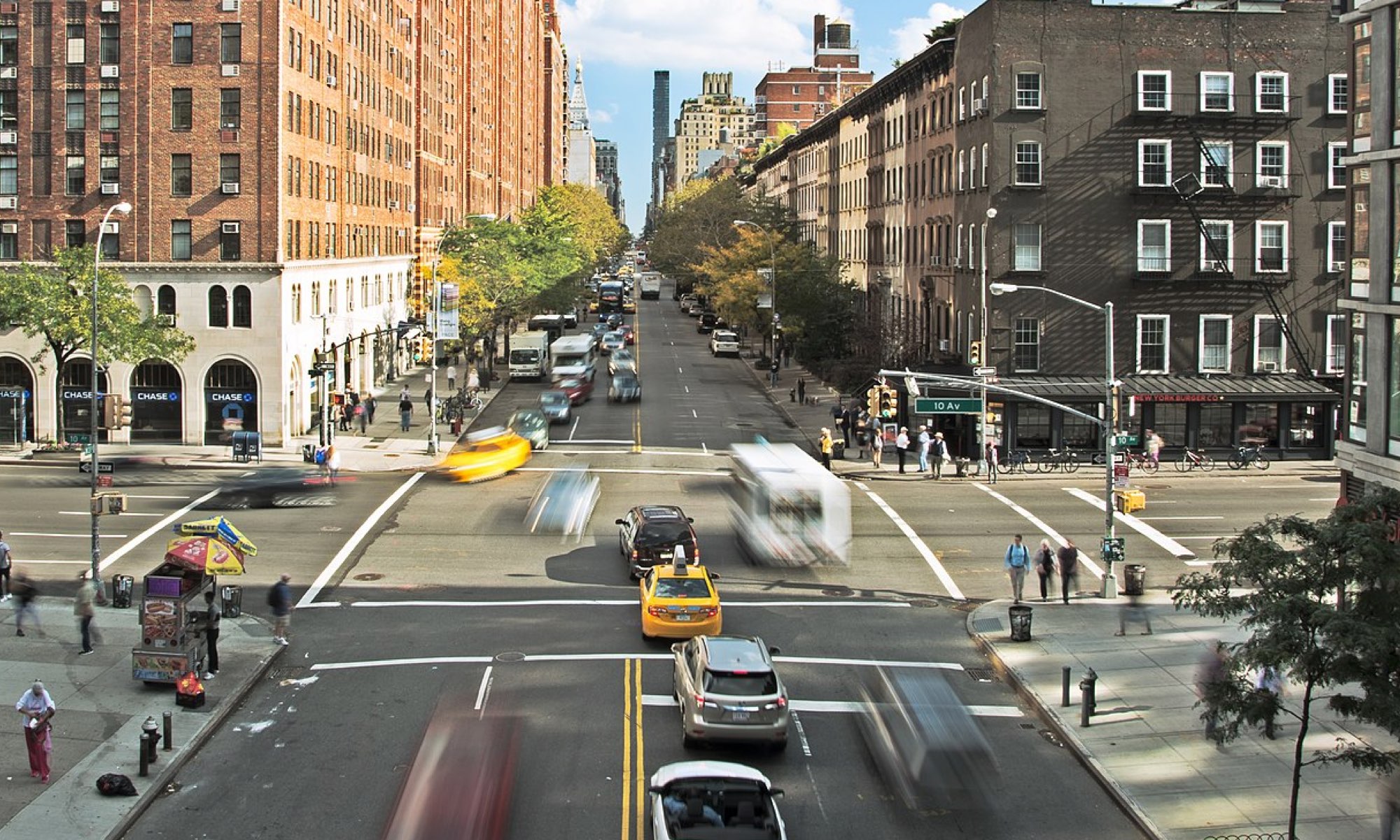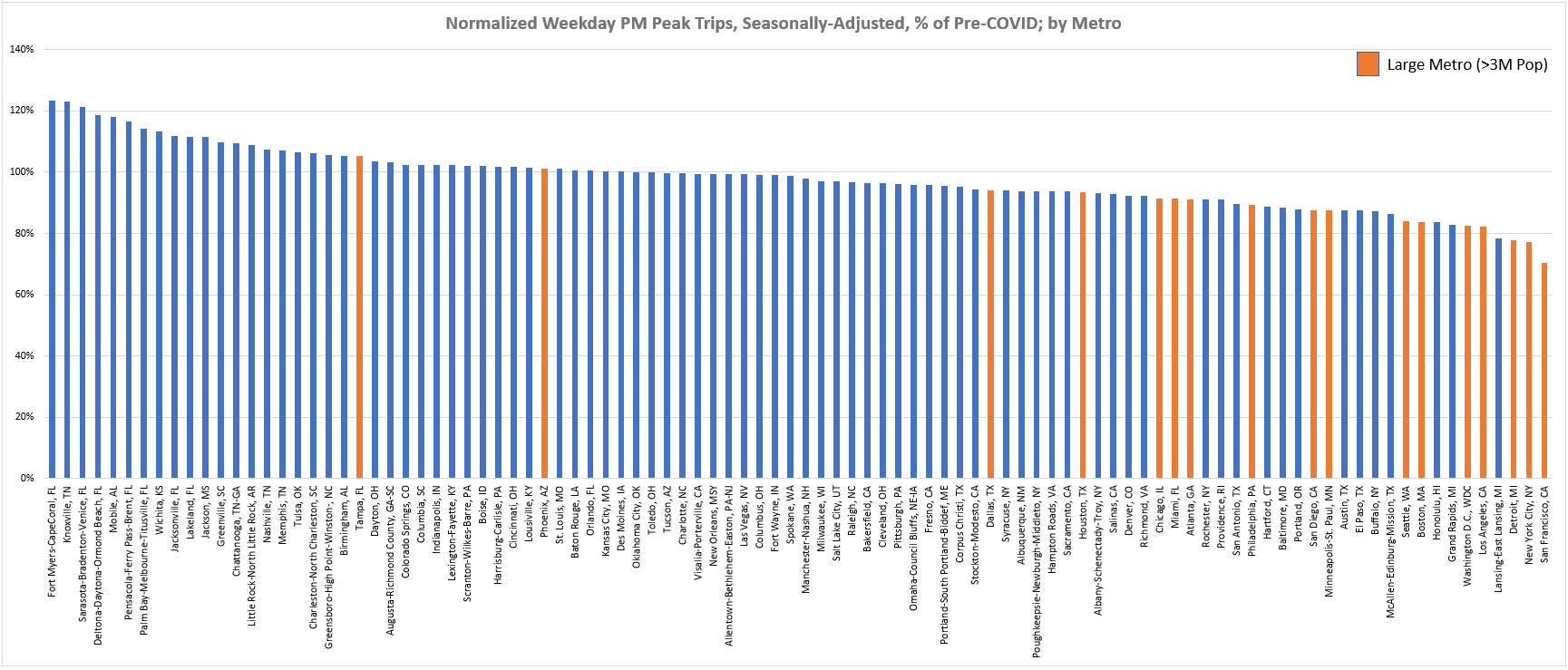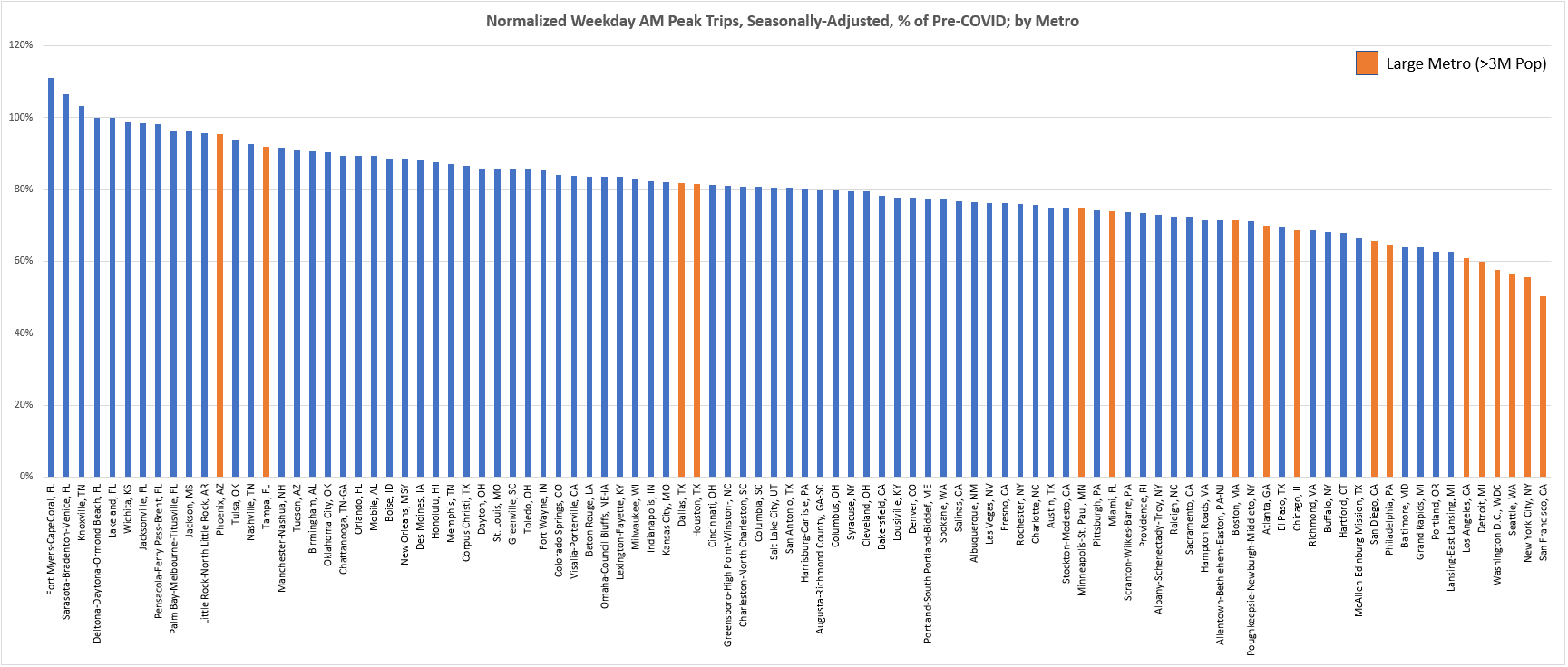
Key Take-a-ways:
• VMT and Trips have grown over the last month, exceeding pre-COVID levels
• Yet the largest metro areas have the slowest growth.
• Afternoon trips have recovered from the pandemic in just two major metros
• Morning peak trips have not recovered in any major metro
Continuing a trend we saw throughout the COVID-19 pandemic, morning commute traffic is still far below pre-COVID levels in terms of trips and vehicle-miles traveled. Nationally, VMT exceeded pre-COVID levels beginning in late February and continuing through April. In the last few weeks, trips taken by drivers in the United States have increased on a slight upward trajectory.

Yet some areas are seeing fewer VMT and trips than their counterparts. For example, trip growth in Washington DC, New York and Seattle continue to lag Phoenix, Dallas and Miami. Even within metro areas, the number of trips taken varies considerably by time of day.
PM Commute Trips
The afternoon commute has started roaring back in many metro areas. 45 of the 100 US metros we follow have reached or exceeded pre-COVID level of trips during the PM commute. However, only two major metropolitan areas (areas with over 3 million people) had reached pre-COVID level – Tampa, FL and Phoenix, AZ. 16 of the 18 major metros analyzed fell both under pre-COVID levels and below the median of 98%. (Download image here)

Large metros aggregate near the bottom, with San Francisco (down 30%), New York (-23%) and Detroit (-22%) all in the bottom three.
AM Commute Trips:
Throughout 2020 and into 2021, morning peak traffic has been the most affected from “work from home” policies, mandated business closures and restrictions, and online and hybrid schooling. While the PM commute has returned in many less populated metro areas, morning person-trip demand continues to be weak in the majority of metros – only 5 of 100 metro areas analyzed reached or exceeded pre-COVID levels. (Download image here)

Earlier this year, INRIX documented this phenomenon with data from more than 200,000 traffic signals. This analysis revealed that crossings at intersections (volumes) during the mid-day outnumber the morning peak.
Why this matters
Often, transportation engineers and professionals attempt to reduce vehicular demand at specific times of the day, to “flatten the peaks.” Flattening peak demand (morning and afternoon peak period) would provide many benefits – to travelers, to transit agencies and to the environment. Traditionally, this has been tackled by implemented aggressive Transportation Demand Management programs, congestion-based or time-of-day road pricing, and transit and cycling investments.
Yet telecommuting, which was rising as a “commute mode” even before COVID-19 emerged, has had a more significant impact on reducing travel demand – as evidenced by the lack of AM commute – helping the environment, saving public money, and reducing travel costs.




